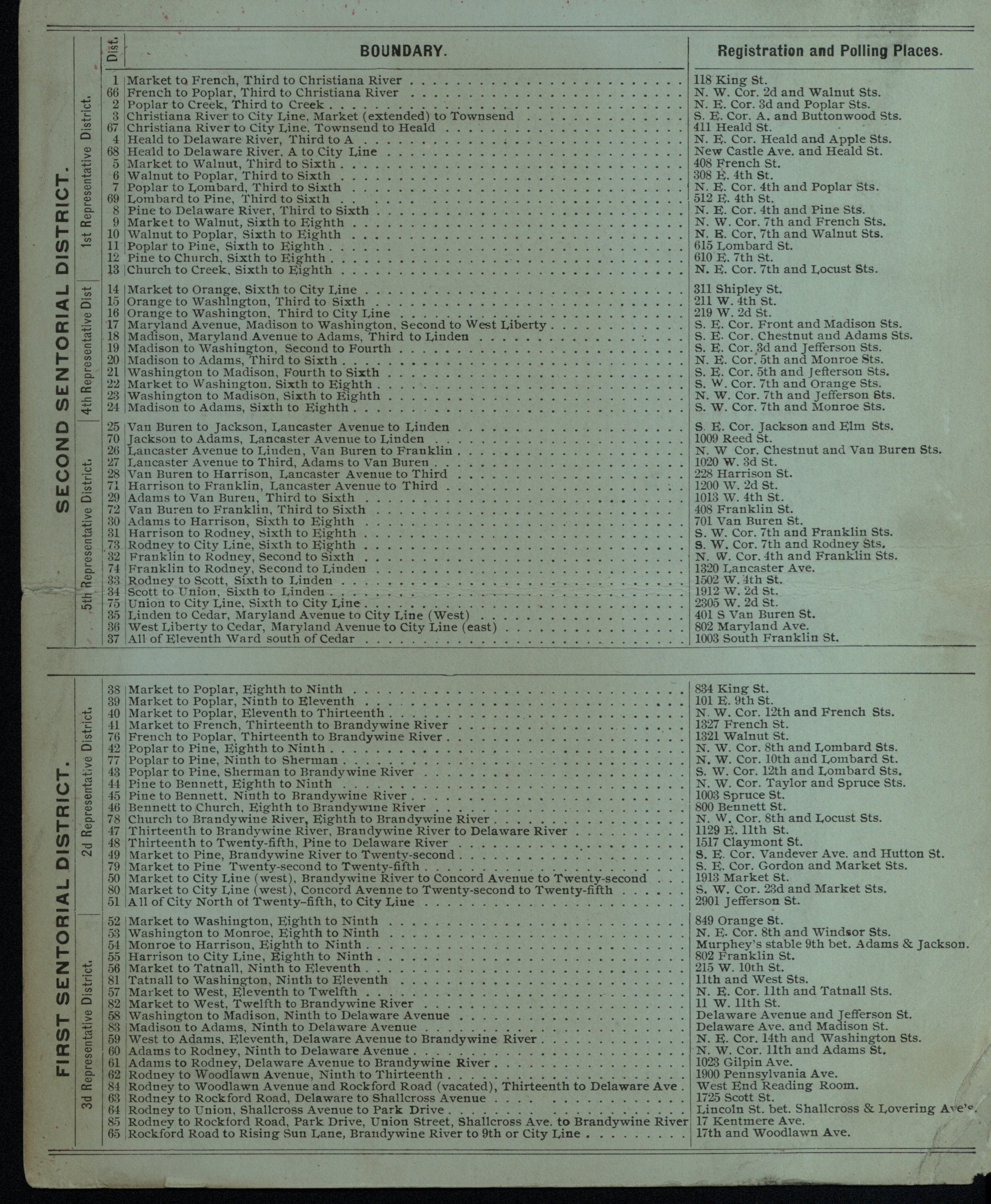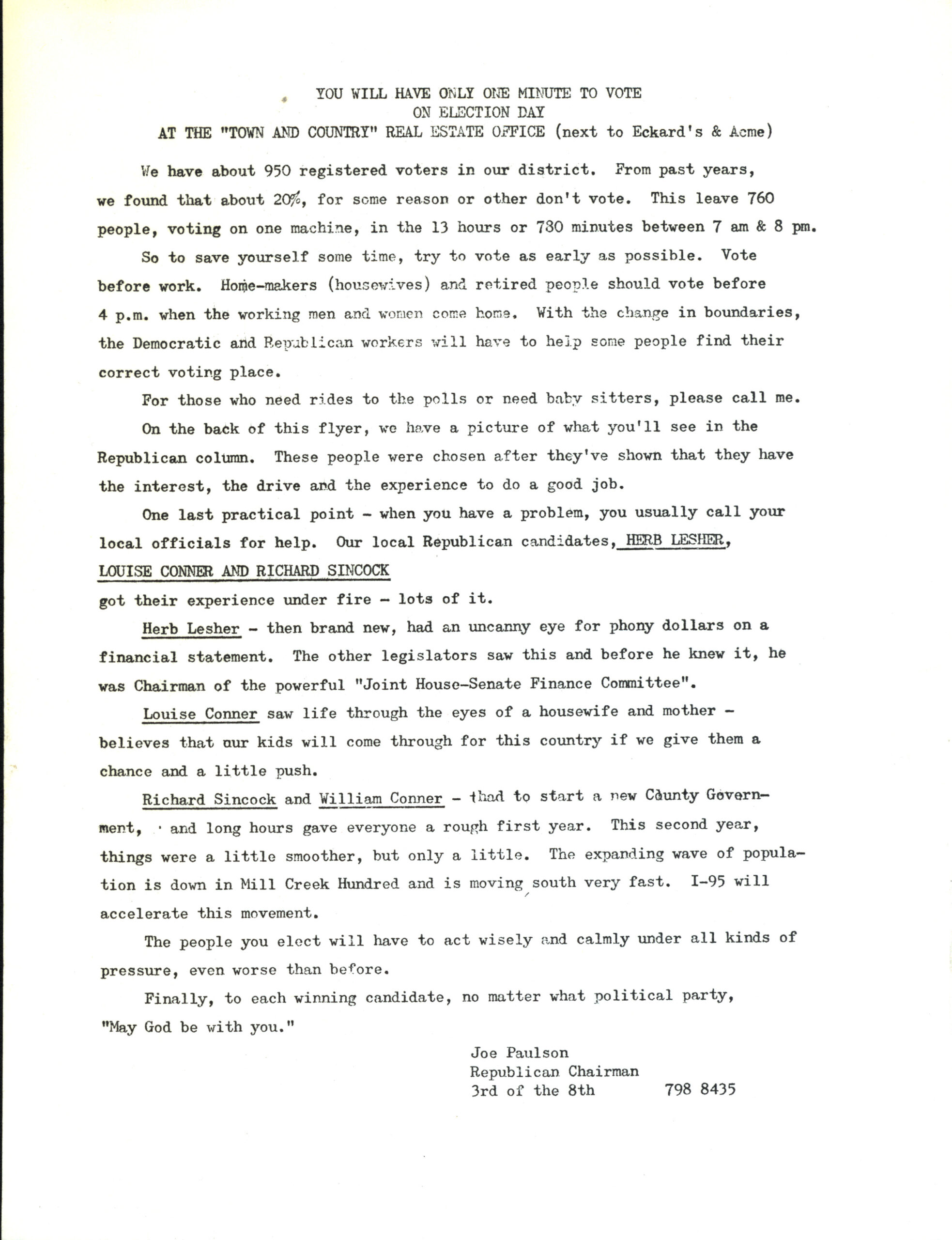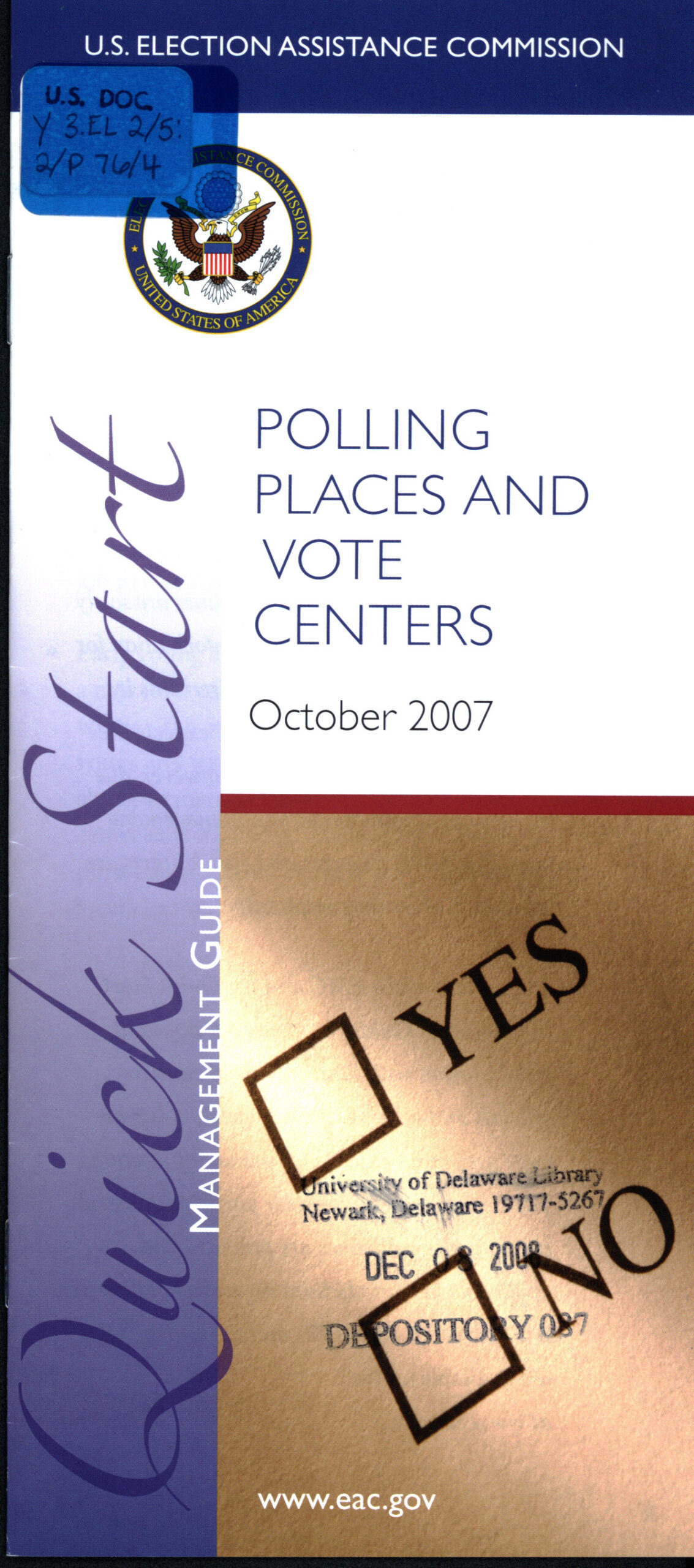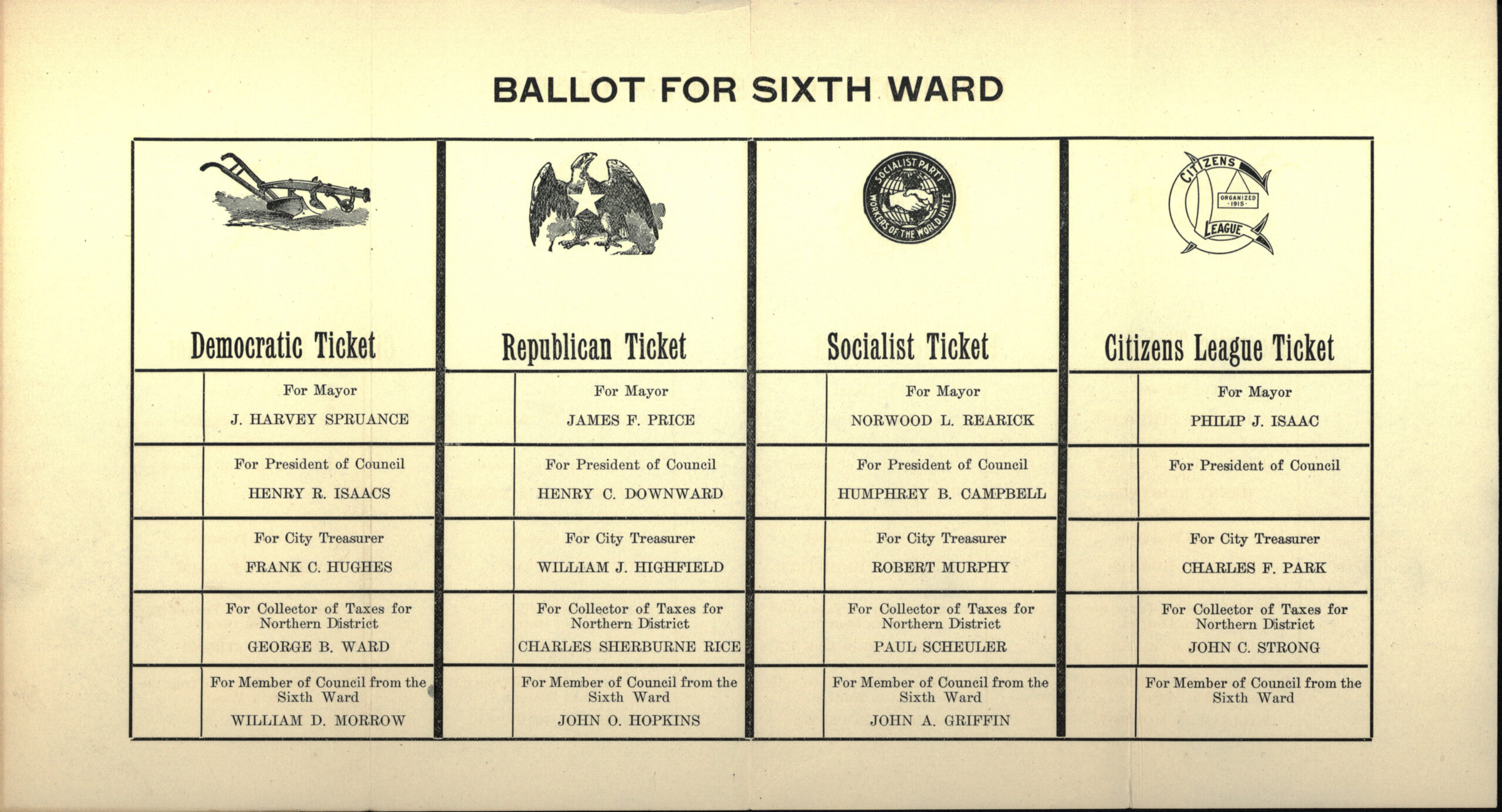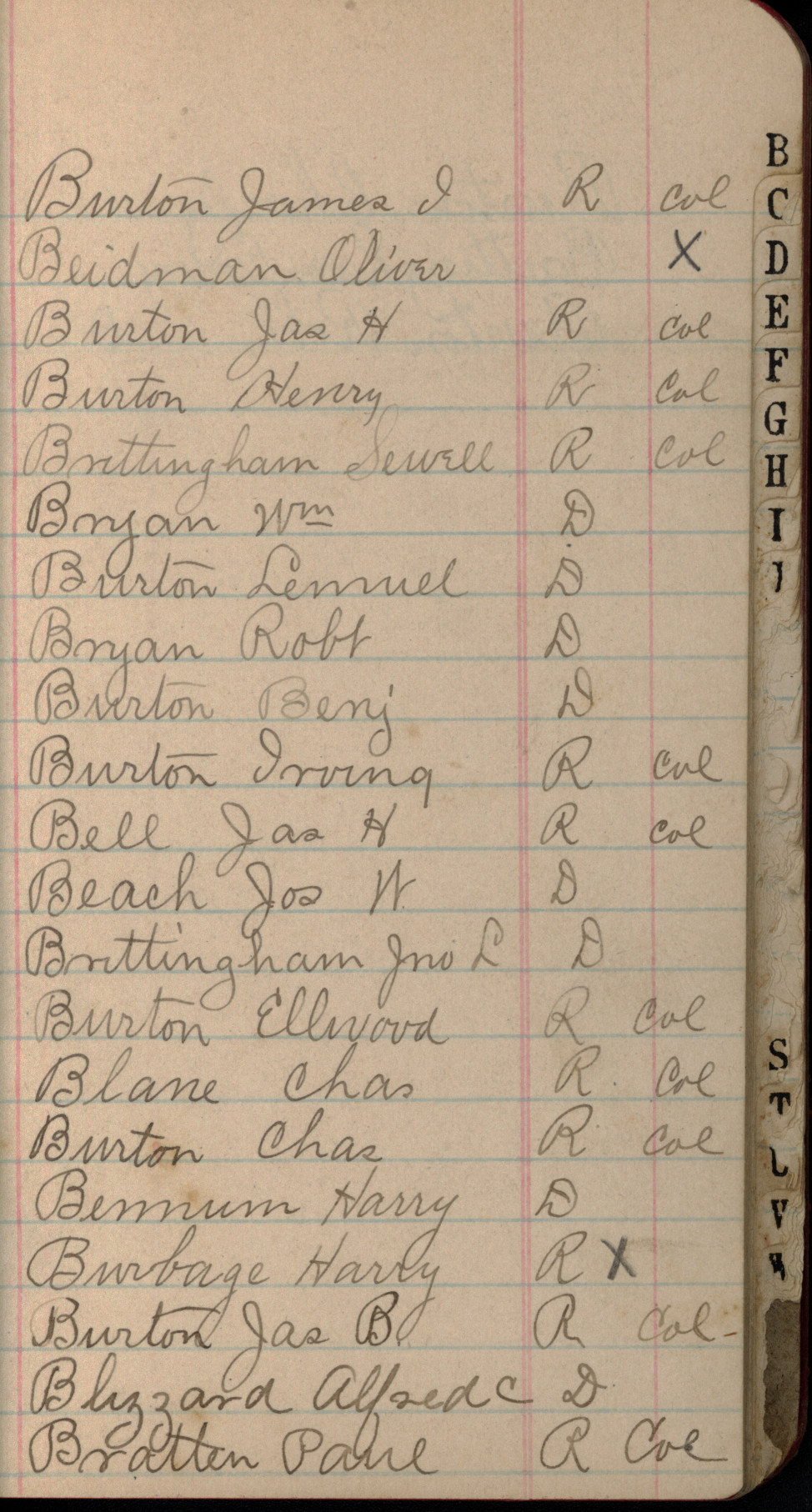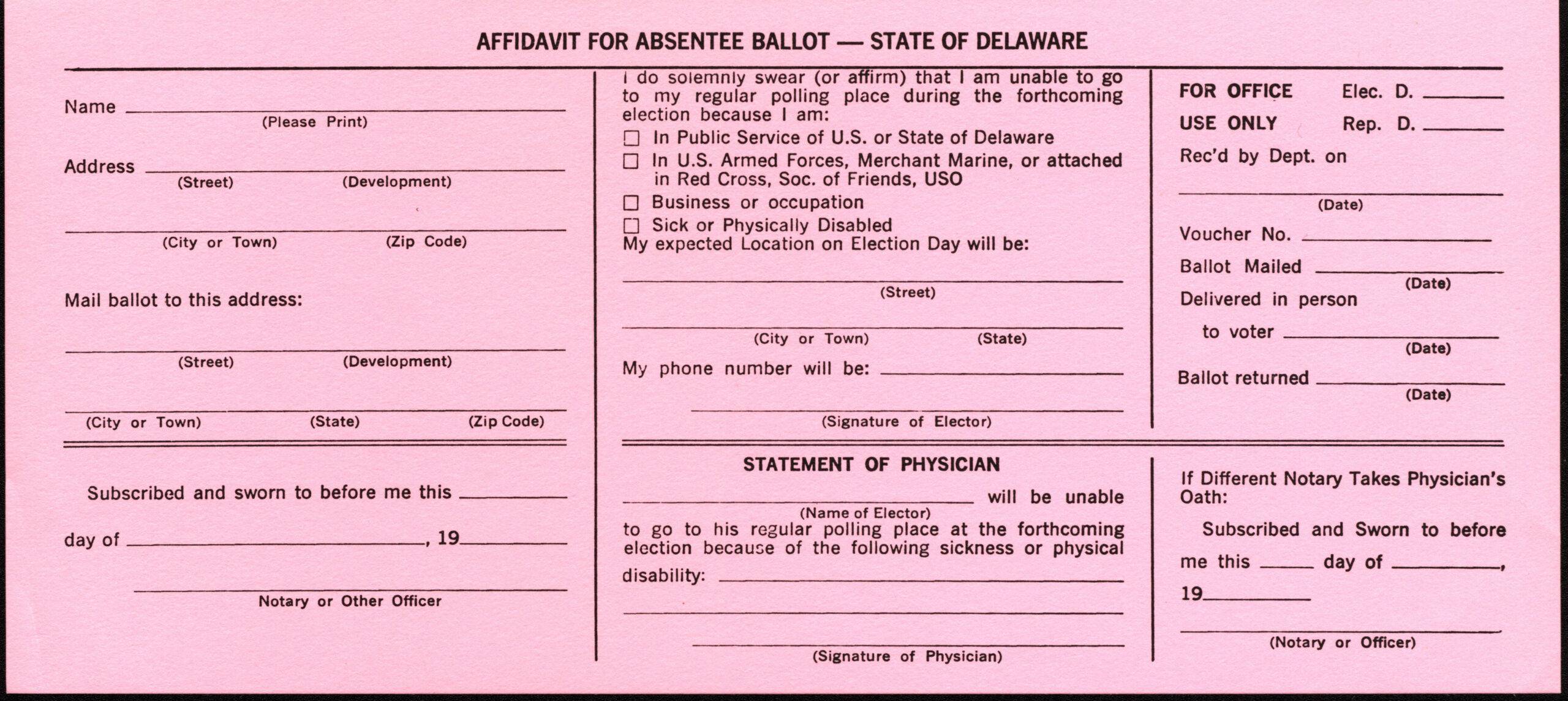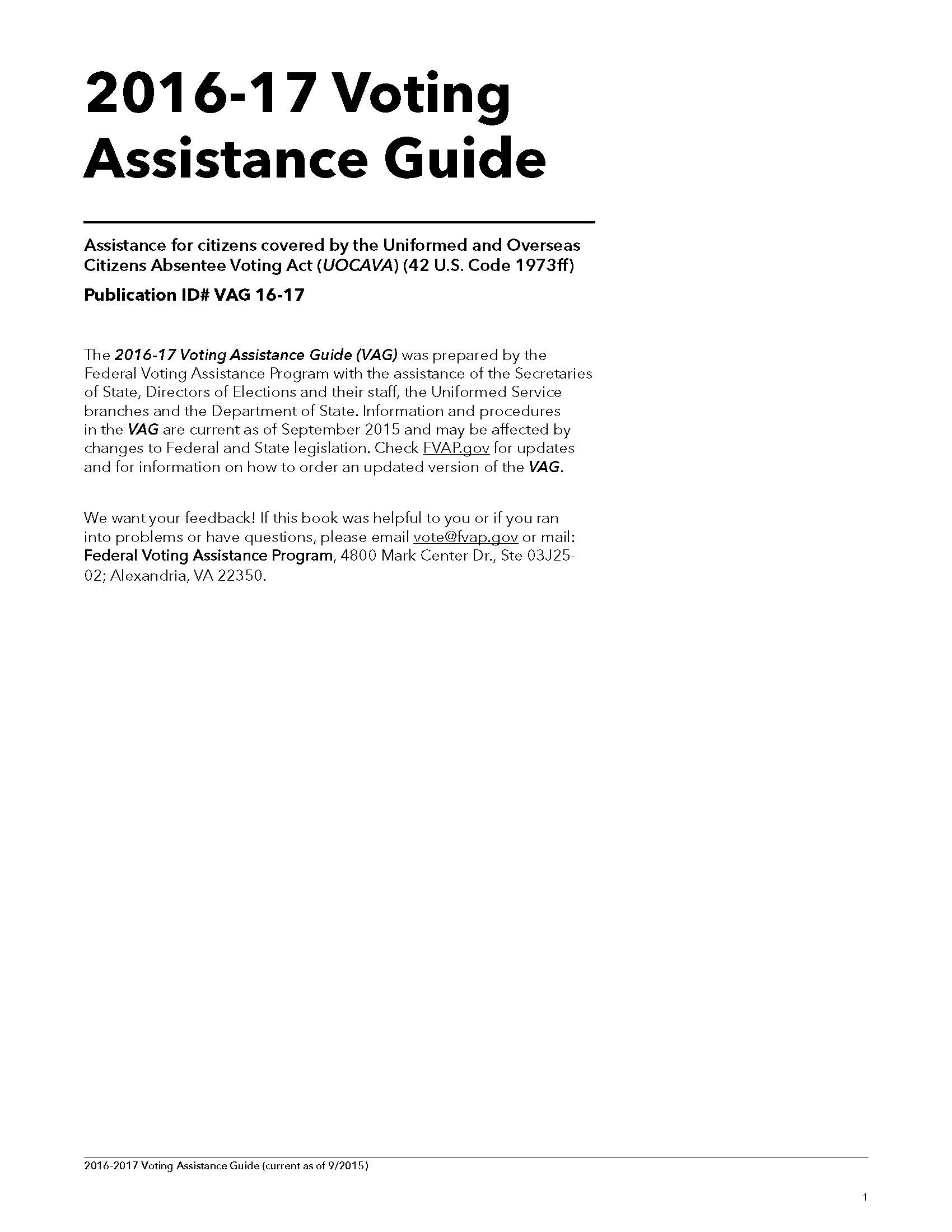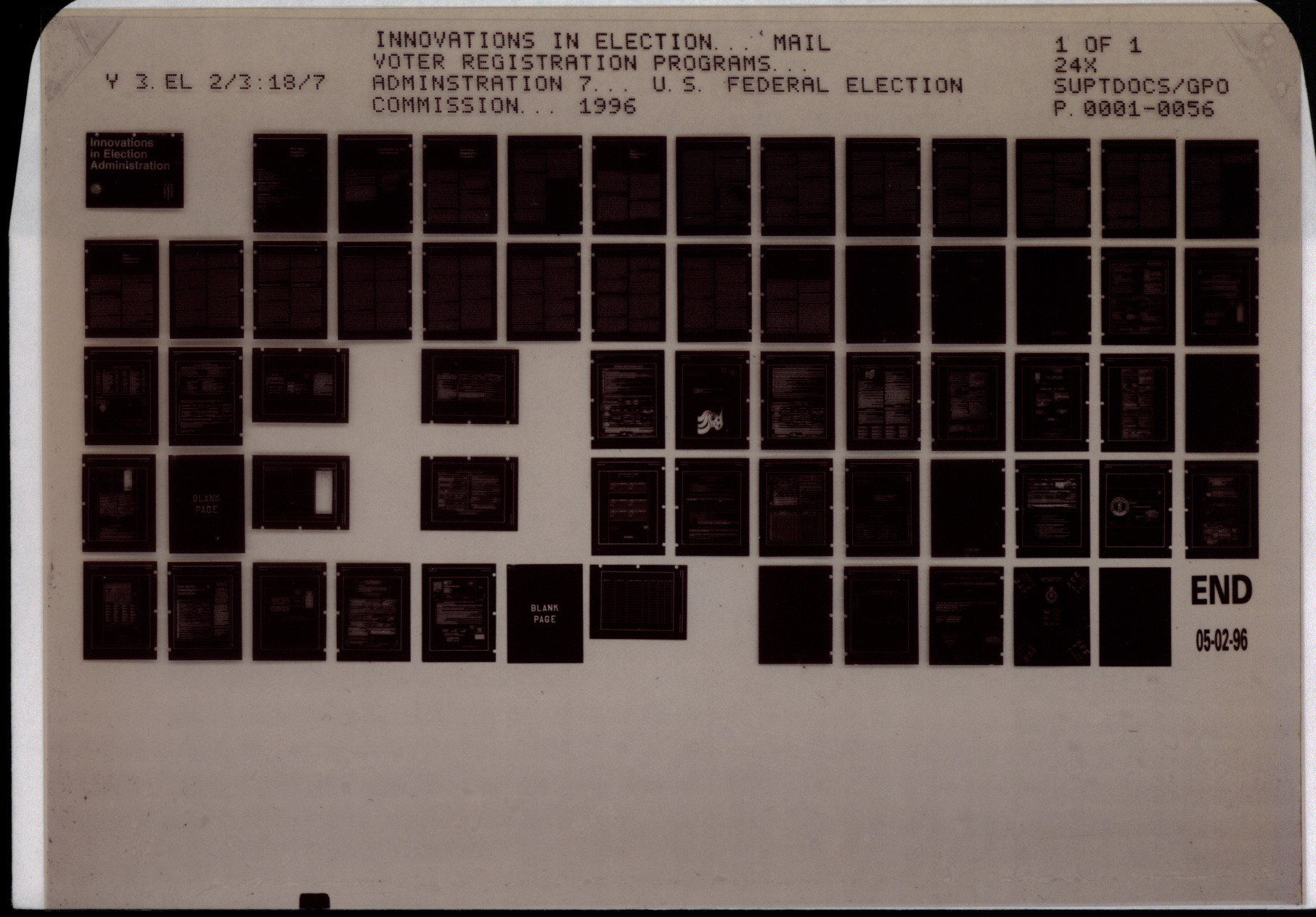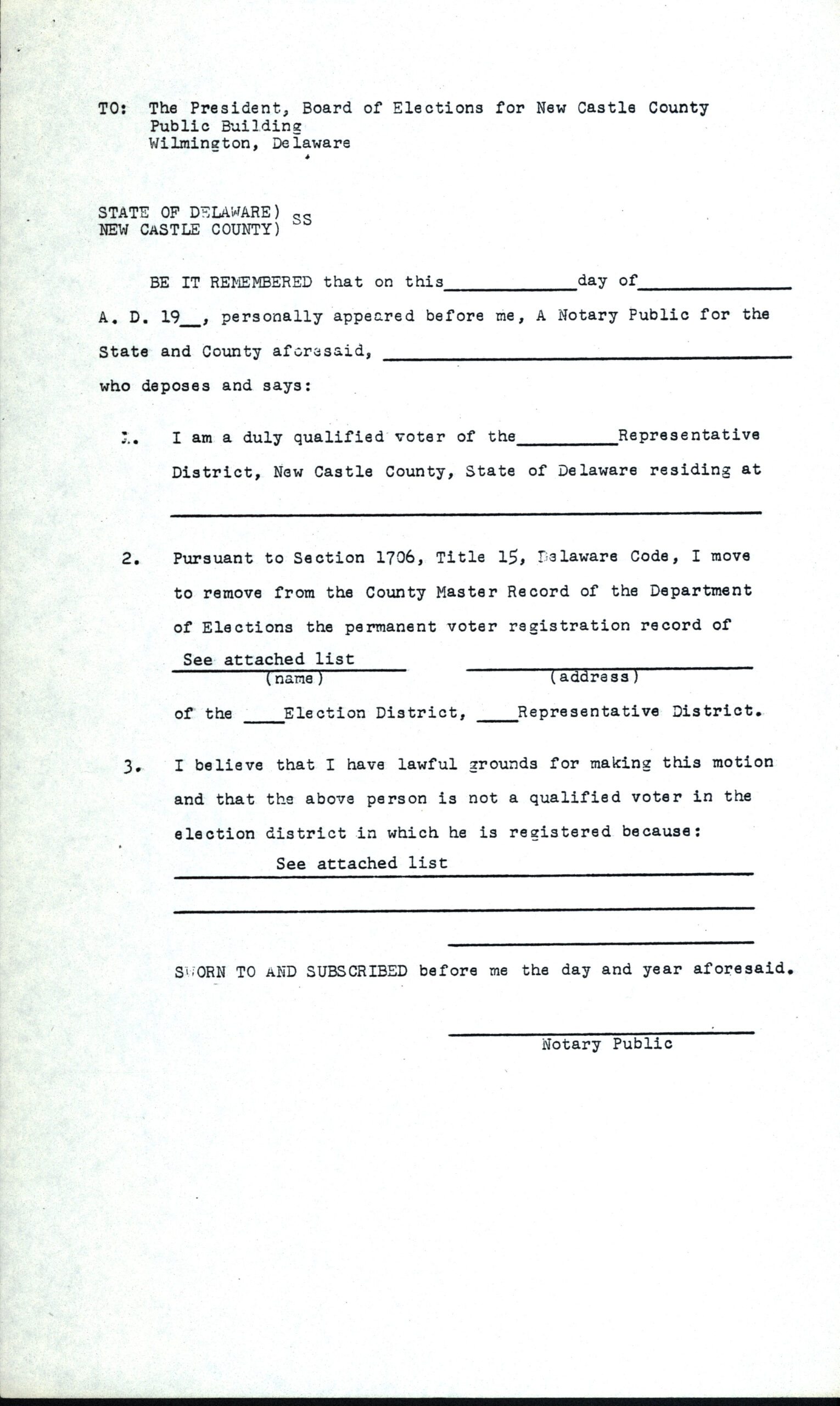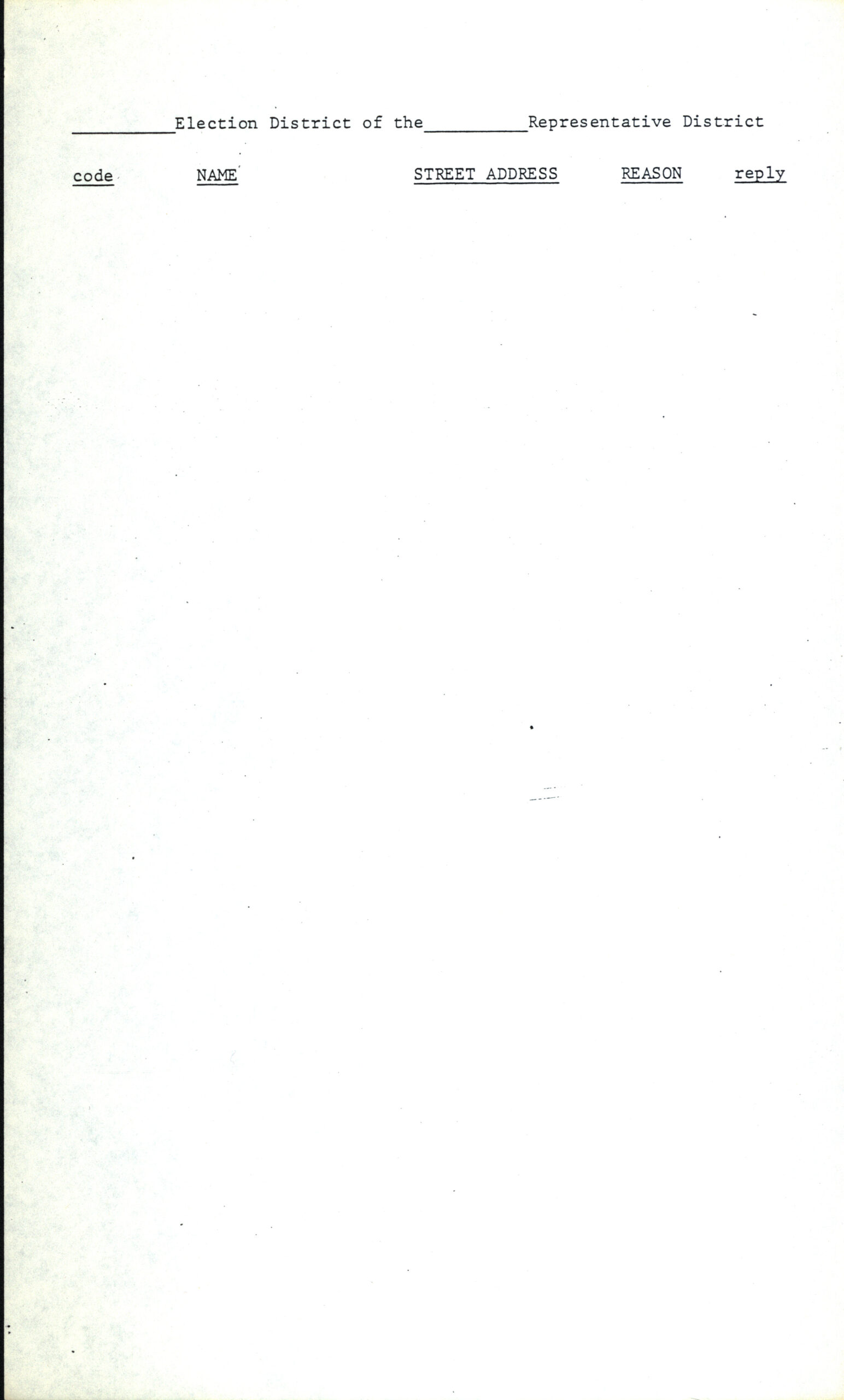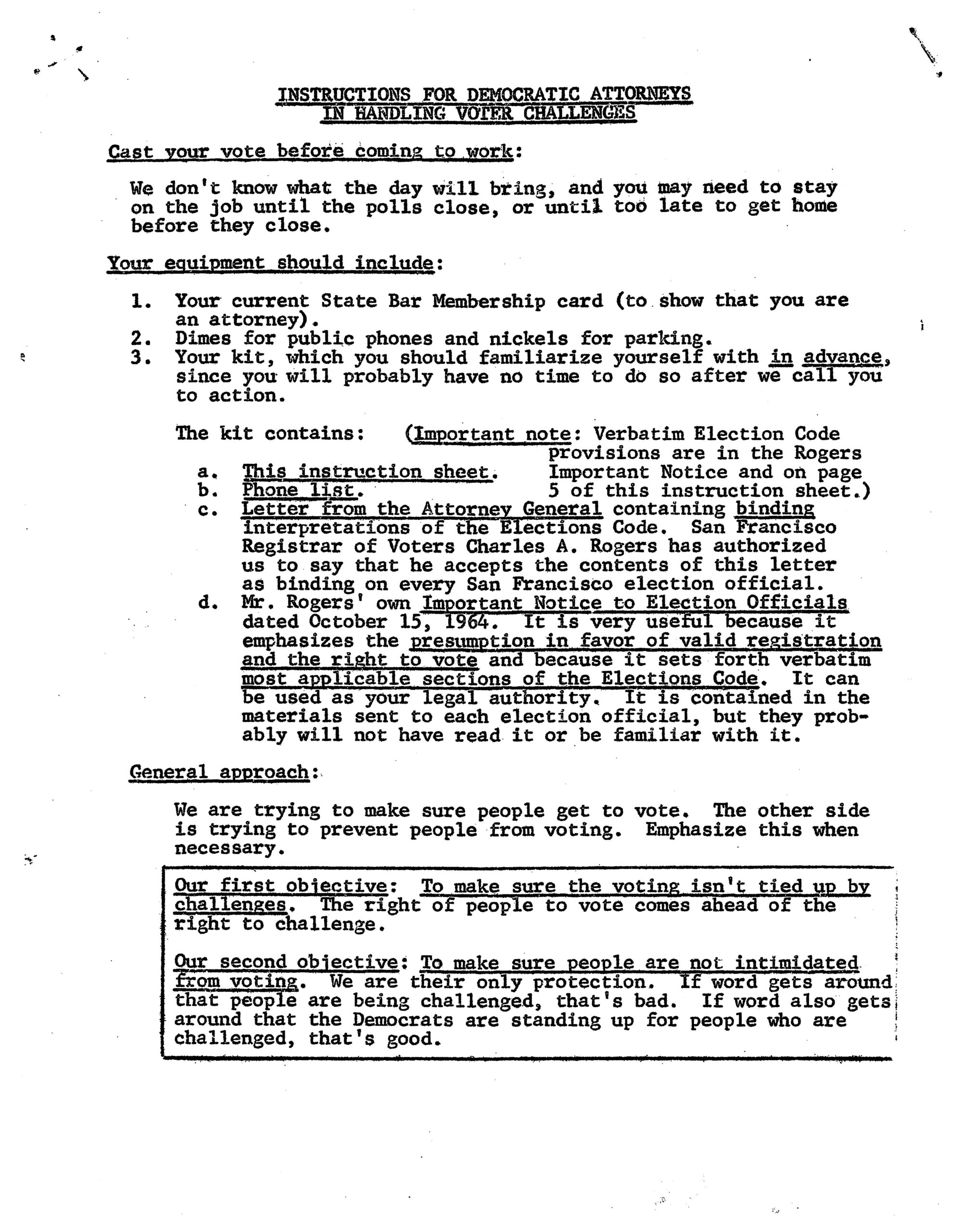“The Stakes are too High… to be a Spectator”
What happens on Election Day? In the United States, elections are run by state and local officials through an Elections Department. Local election officials set election precincts, print ballots, maintain voter rolls, and operate polling places on Election Day. But Election Day also starts much earlier than November. Election officials begin collecting ballots long before the election to provide greater access to the polls if a person will be away or is physically unable to travel. Allowing millions of people to vote on one day is a large task. Guidelines and strict procedures ensure that every vote is counted.
A listing of the election districts for State Senate, State House of Representatives, and local precinct, including the boundaries of each district and the locations for voters to register and cast their ballots. Even for a small geographic area like Wilmington, this shows just how many polling places are necessary to run an election.
A mailer distributed by local Republican Party Chairman Joe Paulson, providing advice on voting times and logistics for Election Day based on the number of registered voters districted to vote at this location.
This pamphlet provides information to help states administer their elections fairly and in accordance with federal law. To view this item online, click this link.
A sample ballot, letting voters become familiar with the candidates and parties to plan their vote ahead of the election.
A small address book including the names of the 1904 registered voters in Rehoboth, Delaware, as well as their party affiliation and race. The page on display shows the voter list of men with the last name starting with "B."
Not everyone can vote at the polls on Election Day. Systems for early voting absentee (or mail-in voting) have existed for decades to provide voters numerous ways to participate in voting.
Affidavits like this were sometimes required to secure an absentee ballot, assuring election officials that a voter would not be able to cast a ballot in person on Election Day.
The Voting Assistance Guide is intended to assist state election administrators in providing guidance and information on state-specific election guidelines. Officials allow for multiple ways for voters to cast their vote, including allowing voters to vote by fax, the telephonic transmission of scanned material. This page shows fax instructions. To view the full guide, click on this link.
This report from the Federal Elections Commission shared information and examples for states to operate mail-based voter registration systems in accord with the National Voter Registration Act of 1993. In our library, this report is available on microfiche, as shown. To view the full report, click on this link.
As the electorate expands, so have the opportunities for people to challenge a voter’s ability to cast a ballot. States have different rules around who can challenge a voter's ability to cast a ballot and on what grounds challenges can be made on Election Day. When voter eligibility is challenged, different remedies are employed to make sure as many people as possible can cast a ballot on Election Day. In Delaware, there is a designated "challengers table" where people can sit and ensure that all voters are eligible, registered, and that voting remains secure.
A form voters and election watchers could use to challenge a Delaware voter’s registration and remove them from the voter rolls, disqualifying them from being able to cast a regular ballot.
Part of a voter challenge kit from the Civil Rights era, this packet contains important information and resources for lawyers to monitor elections and aid any who might be called on to assist challenged voters. Many of the anticipated challenges were suspected to be made against African American or other non-white voters.
Additional Resources:

